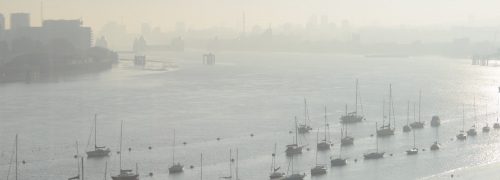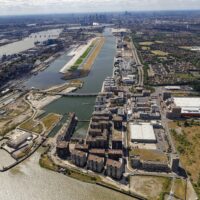
Community news
Choose up to FIVE locations for The Royal Docks Digital History Plaques Project
The Royal Docks History Club, with support from The Royal Docks Team, is currently working on a Digital Historical Plaques Project.
The outcome will see a specific History section on the Royal Docks website highlighting 10 iconic locations, with one page for each landmark explaining its history with accompanying photos – a digital version of a History Plaque for each place.
5 of the locations have already been picked as an Editor’s Choice by the project coordinator Marieta Evans: Royal Victoria Dock, Royal Albert Dock, King George the V Dock, Harland and Wolff site at Gallions Reach, Royal Victoria Gardens.
For the other 5 locations, everybody is invited to participate by voting for your top 5 among a list of landmarks shortlisted by The Royal Docks History Club participants at their March meeting.
The options are The Woolwich Ferry; St. Mark’s Church; The Kent Arms pub; Clara’s and Dellamura’s shops; St. John’s Church, bombed during the Blitz; The Railway Tavern (Cundy’s); Drew School, which original building opened in 1895; the Tate Institute; North Woolwich Station; the site of the Silvertown Explosion (1917).
Some of these landmarks still exist or are more recognisable, like The Woolwich Ferry, St. Mark’s Church, which now hosts the fabulous https://www.bricklanemusichall.co.uk/, or the now closed Tate Institute, a community and social venue for Tate & Lyle workers and their families.
The Tate Institute building still stands proud and elegant yet derelict in Silvertown opposite Tate & Lyle and in 2021 both Tate & Lyle and the Tate Institute were the theme of a very popular online Heritage broadcast hosted by Thames Festival: https://fb.watch/ckTMoTTfWx/.
But other of the locations albeit gone and disappeared are far from forgotten.
The Kent Arms, a well-known pub on Albert Road which was well-known for its LGBTQ+ clientele was the inspiration for British comedian Jonny Woo’s play Silvertown https://royaldocks.london/articles/step-back-into-the-royal-docks-in-the-1960s-with-jonny-woos-new-play-silvertown.
The Railway Tavern, a fine Victorian pub with accommodation, has gone down in History for being famously used for meetings of union representatives organising the 1889 strike including Eleanor Marx, daughter of Karl Marx.
Clara’s and Dellamura’s are up for distinction because the life of a community can’t be understood without the history of its corner shops.
Silvertown shop Dellamura’s was first located on the corner of Drew Road and Andrew Street. When Andrew Street was demolished, they moved into a unit underneath the new maisonettes in Constance Street, next to what is now the Royal Legion club. It was a small convenience shop that stocked everyday household items, but also sold a wide range of sweets and of course their notable home-made ice creams.
Clara’s was on Albert Road just a few numbers down from the current site of the Royal Docks Learning and Activity Centre, and served the people of North Woolwich for generations.
Royal Docks History Club participants Colin Grainger and Colleen Russel, who participated in shortlisting locations for the poll agreed on the importance of corner shops as pillars for the community, specially at a time when very few houses had a fridge, so people bought what was needed on a daily basis.
Dave Fennessy, from Silvertown and North Woolwich Past and Present online group “defended” North Woolwich Station candidacy: “North Woolwich Station building has the unique honour of being the oldest building still standing in today’s North Woolwich, narrowly beating the Three Crowns property. It offered, for a time, the early ability to cross the Thames at Woolwich direct from the city of London via rail before the Greenwich railway was completed. Railway stations very often play an important part in establishing land and areas that become urban developments, North Woolwich was no exception”.
Indeed, it was the arrival of the Railway that sparked the building of the docks in the area we now know as The Royal Docks.
Now it’s YOUR turn to choose 5 among these landmarks to be recognised with a Digital Historical Plaque – click on the Poll and make your vote count!


